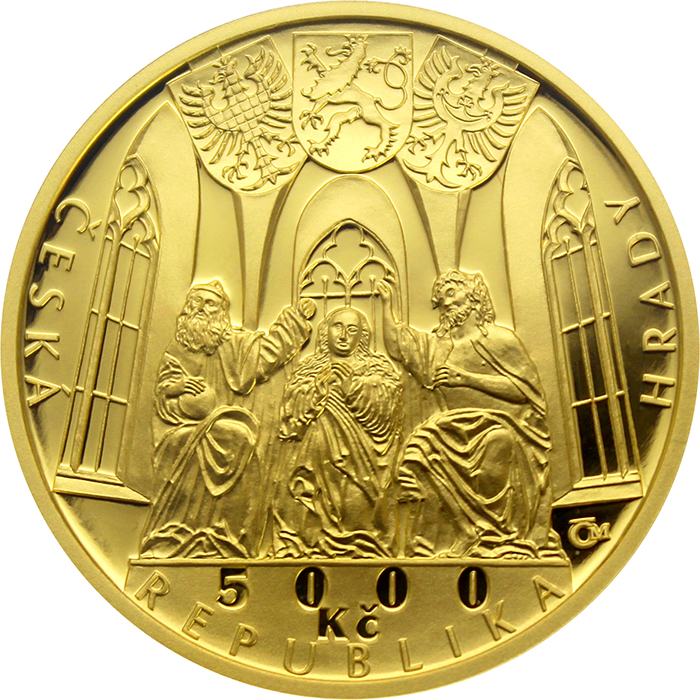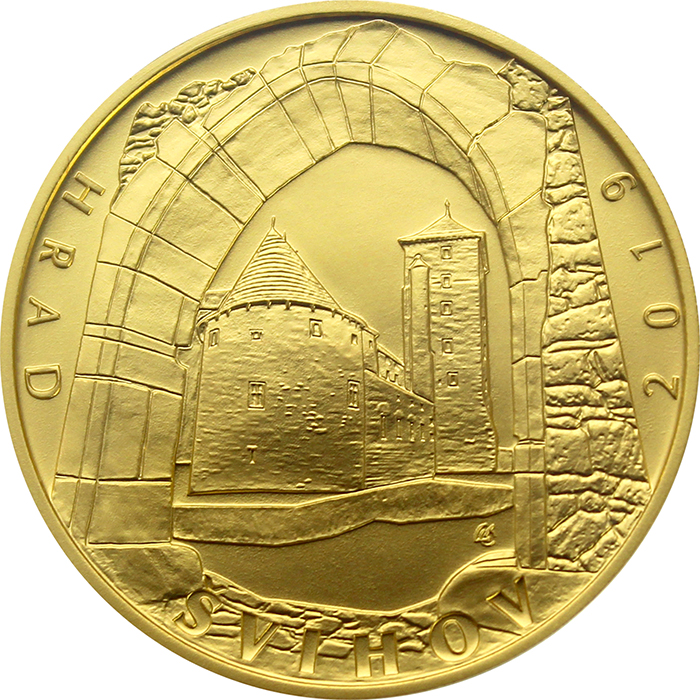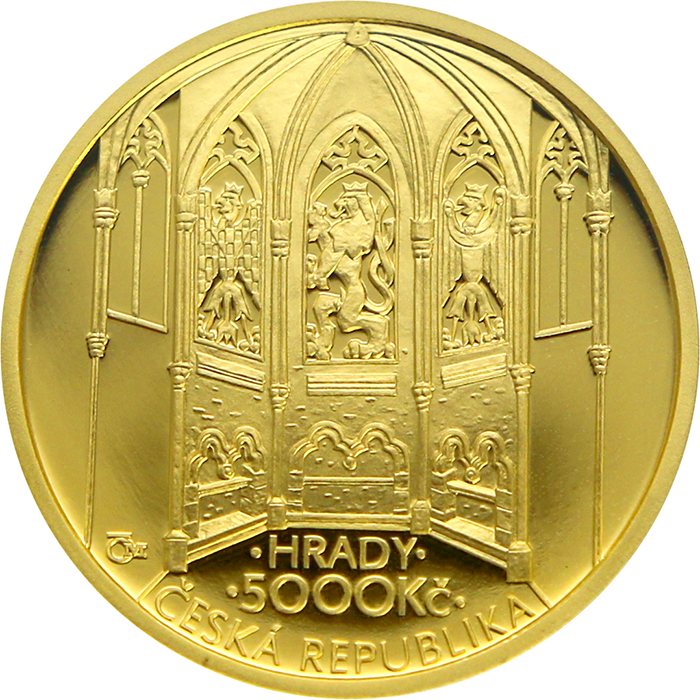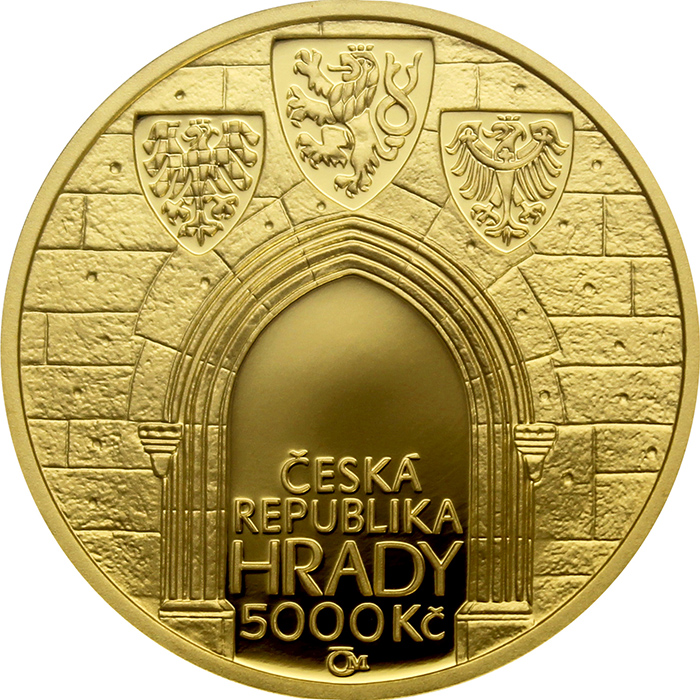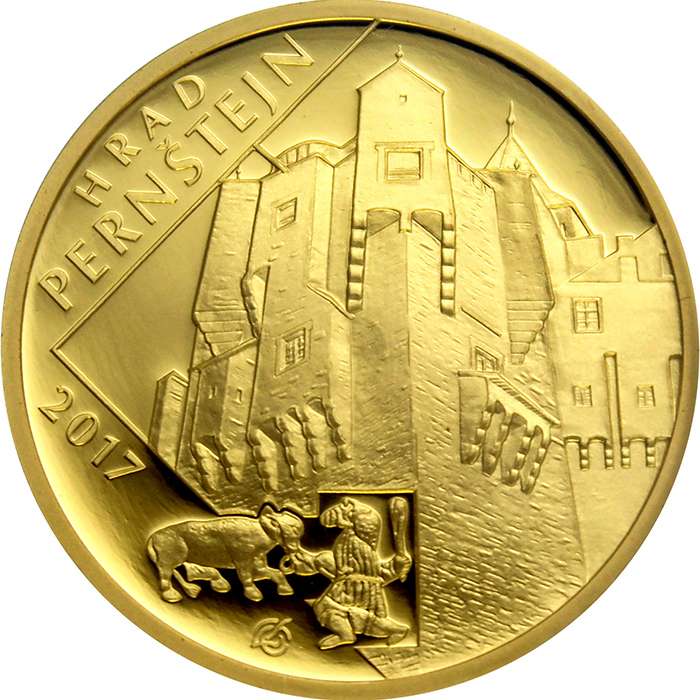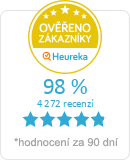Gold Coin 5000 CZK Švihov Castle 2019 Proof
The product cannot be ordered now.
NOT IN STOCK
View the product
Detailed description
1/2 Oz Gold Coin - Švihov Castle
The reverse side of the coin depicts a view of the castle courtyard through a late Gothic portal. The text "HRAD" appears at the left edge of the coin, the text "ŠVIHOV" at the bottom edge and the year of mintage "2019" at the right edge. The initials of the author of the coin, Luboš Charvát, which are formed by the interconnected letters "L" and "Ch", are located to the left of the text "ŠVIHOV".
On the obverse side of the coin, in the upper part of the coin field, a composition of heraldic animals from the large state emblem in shields. Below the composition of heraldic animals is the interior of the Švihov Chapel of the Assumption of the Virgin Mary and its altar is depicted in the foreground. At the left edge of the coin is the text "CZECH" and at the right edge the name of the cycle "HRADY". Below the altar is the denomination of the coin with the abbreviation of the monetary unit "5 000 CZK" and the text "REPUBLIKA". The mark of the Czech Mint, which is a composition of the letters "Č" and "M", is placed to the right of the altar.
Švihov is a Gothic water castle located in the town of Švihov in the Klatovy district. The castle is protected as a national cultural monument of the Czech Republic.
The founder of the castle, which is first mentioned in 1375, was the family of the Lords of Rýzmberk from Skála. During the Hussite wars it was besieged by the Hussite army and its garrison surrendered only after the castle moats were drained. In 1480-1489 it was rebuilt in the late Gothic style on the orders of the then owner of the estate, Puta Švihovský of Rýzmberk.  After his death, the fortification was continued by his sons, who invited the famous architect Benedikt Ried to build it. After the Švihovský family, the Kavkas of Říčany took over the castle in 1548, but their poor management forced them to sell the castle to the Černíns of Chudenice as early as 1598. Then came the Thirty Years' War. The castle was unsuccessfully besieged by Swedish troops.
After his death, the fortification was continued by his sons, who invited the famous architect Benedikt Ried to build it. After the Švihovský family, the Kavkas of Říčany took over the castle in 1548, but their poor management forced them to sell the castle to the Černíns of Chudenice as early as 1598. Then came the Thirty Years' War. The castle was unsuccessfully besieged by Swedish troops.
After the war, probably out of fear of a possible "impregnable hatchery of anti-Habsburg resistance", the Habsburg Emperor Ferdinand III ordered the demolition of the castle. However, due to constant delays, it never took place in its entirety; only part of the fortifications were destroyed. Švihov Castle remained in the possession of the Černín family until 1945, when it was nationalised.
The Czechoslovak state took over this important historical monument in a desolate state. However, in 1950, programme reconstruction work began, which was otherwise unique in its time. The castle was again roofed, the interiors cleaned, and the castle furnishings restored. Another "wave" of repairs came to Švihov after the floods in August 2002. In 2014, the entrance tower of the castle core was repaired.
The castle consists of two residential palaces, a five-storey entrance tower and a castle chapel built on the bastion. Only partially preserved wall with four bastions - Red, White, Green and Gold. Only one cylindrical bastion has survived from the outer fortification.
Today the castle is under the administration of the National Heritage Institute in České Budějovice. Two sightseeing tours are available: the castle itself and the castle kitchen. The tour lasts 60 and 50 minutes respectively. The castle is also used as a cultural centre. Weddings, exhibitions, balls and concerts are held here. It is also popular with filmmakers. In 1973, for example, the fairy tale Three Nuts for Cinderella was filmed here.
This product is part of the following product sets:
Castles of the Czech Republic seriesProduct Specifications
Application form
Thanks to our position on the market, we can try to provide you with a product that is currently sold out or unavailable for a longer period of time. Simply fill in the application form and we will contact you as soon as we are able to secure the product.
Filling in the application form is not binding for you.
Buyback contact form
We will be happy to buy investment metals purchased from us or from our competitors. Our customers always get the highest price offered at any given time. Fill out the form below and we will contact you. Thank you for your trust.

